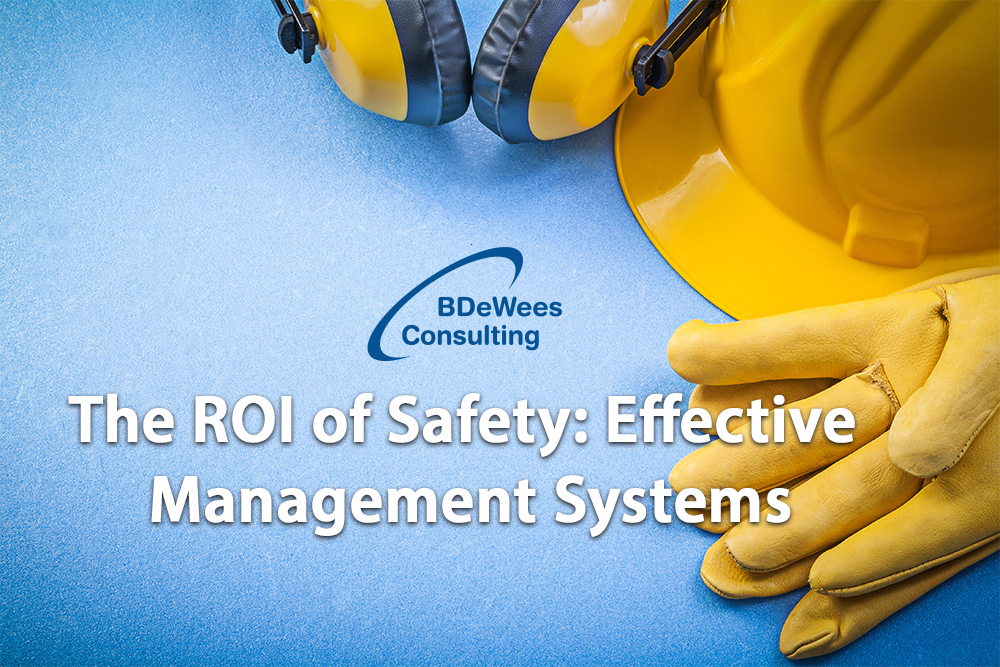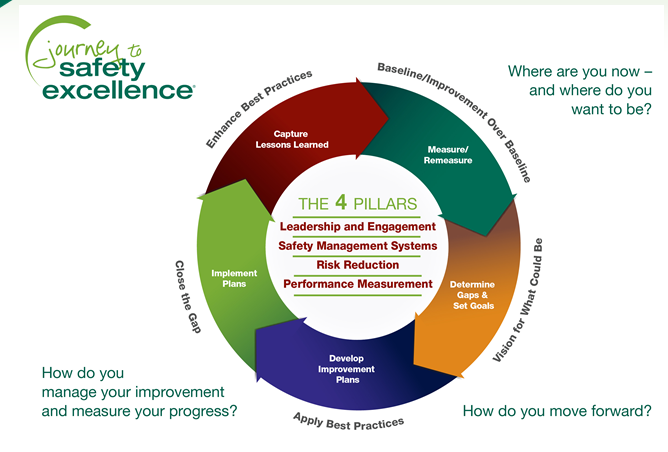The ROI of Safety: Effective Management System

In virtually every industry, workplace injuries and illnesses occur daily. When occupational injuries and death are looked at annually, on a national level, the cost is staggering. Injury costs are like icebergs. Just as ninety percent of the typical iceberg lurks unseen beneath the surface of the water, surprisingly high unanticipated costs lurk beneath every injury.
Aside from paying for your employee’s injury, the “indirect” costs may include everything from the production downtime and its effect on your business, possibly overtime to make up for that downtime, damage to your products or raw materials, and repairs to your workplace or equipment. You could even face OSHA fines and legal costs. That’s why it’s important to develop an effective safety management system to reduce the chance of injury and illness from the start.
What is a safety management system?
A safety management system is a systematic, explicit and comprehensive process for managing safety risks that provides for goal setting, planning and measurement of performance against defined criteria. A formal method of measuring and evaluating individual and organizational safety performance with an emphasis on continuous improvement.
An effective safety management system:
- Reduces the risk of workplace incidents, injuries and fatalities through data-driven measurements and improvements
- Involves engaging people and working in partnership to make safety a shared responsibility, recognizing the value of cross-level teamwork
- Is organized and structured to ensure organizations are able to achieve and maintain high standards of safety performance
- Is proactive, preventive and integrated into the culture of your organization
For example, the NSC Safety Management System Assessment uses a systematic approach that combines multiple points of measurement (both qualitative and quantitative) to gauge the effectiveness of managing safety risks while discovering the root causes of deficiencies.

If you are looking to gain an ROI from your safety management system, the key is to look at the money you put into safety as an investment in your business, rather than thinking of it as an expense. The money you pay for a safety program and the people to implement is likely to be significantly less than what you’d pay for a preventable incident. Numerous studies have shown that just one dollar invested in injury prevention returns between two dollars and six dollars in bottom-line profit.
Although it’s important to develop an ROI on safety, it should not compromise the wellbeing of your workers. Here are 10 Warning Signs that your company is more focused on ROI and less on safety:
- The person who is responsible for safety does not report directly to the CEO.
- The CEO and managers rarely discuss safety at strategy, HR, production, quality, sales and marketing meetings.
- The company’s safety vision is not linked to the business strategy or worst – it is non-existent.
- Managers throughout the organization fail to consistently emphasize safety or are resistant to safety initiatives.
- The organization has few, if any, feedback loops for continuous safety improvement.
- Metrics used to evaluate individual and team performance have minimal-to-no weight placed on safety.
- Employees are not familiar or are skeptical of the sincerity regarding the company’s safety vision and values.
- Training and development do not emphasize safety.
- New employees and contractors are not first and formally introduced and oriented to the organizations safety vision and values.
- Employees are fearful of negative repercussions for reporting safety incidents, risks and hazards.
The solution to find the perfect balance between keeping your workers safe and seeing a ROI from your company’s effort is implementing an effective safety management system. Contact Jim DePew below for assistance!
Jim DePew
Vice President & Consultant
Mobile: (330) 631-9022
Office: (330) 915-2355 Ext: 103
Email: jdepew@bdewees.com

